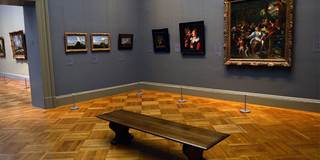The Art of Capital Flight
For emerging-market investors, art has become a critical tool for moving and hiding wealth, which has been a major factor in the spectacular rise in auction prices of the last several years. So, with emerging-market economies from Russia to Brazil mired in recession, and China slowing rapidly, is the art bubble about to burst?
CAMBRIDGE – What impact will China’s slowdown have on the red-hot contemporary art market? That might not seem like an obvious question, until one considers that, for emerging-market investors, art has become a critical tool for facilitating capital flight and hiding wealth. These investors have become a major factor in the art market’s spectacular price bubble of the last several years. So, with emerging market economies from Russia to Brazil mired in recession, will the bubble burst?
Just five months ago, Larry Fink, Chairman and CEO of BlackRock, the world’s largest asset manager, told an audience in Singapore that contemporary art has become one of the two most important stores of wealth internationally, along with apartments in major cities such as New York, London, and Vancouver. Forget gold as an inflation hedge; buy paintings.
What made Fink’s elevation of art to investment-grade status so surprising is that no one of his stature had been brave enough to say it before. I am certainly not celebrating the trend. I tend to agree with the philosopher Peter Singer that the obscene sums being spent on premier pieces of modern art are disquieting.



CAMBRIDGE – What impact will China’s slowdown have on the red-hot contemporary art market? That might not seem like an obvious question, until one considers that, for emerging-market investors, art has become a critical tool for facilitating capital flight and hiding wealth. These investors have become a major factor in the art market’s spectacular price bubble of the last several years. So, with emerging market economies from Russia to Brazil mired in recession, will the bubble burst?
Just five months ago, Larry Fink, Chairman and CEO of BlackRock, the world’s largest asset manager, told an audience in Singapore that contemporary art has become one of the two most important stores of wealth internationally, along with apartments in major cities such as New York, London, and Vancouver. Forget gold as an inflation hedge; buy paintings.
What made Fink’s elevation of art to investment-grade status so surprising is that no one of his stature had been brave enough to say it before. I am certainly not celebrating the trend. I tend to agree with the philosopher Peter Singer that the obscene sums being spent on premier pieces of modern art are disquieting.